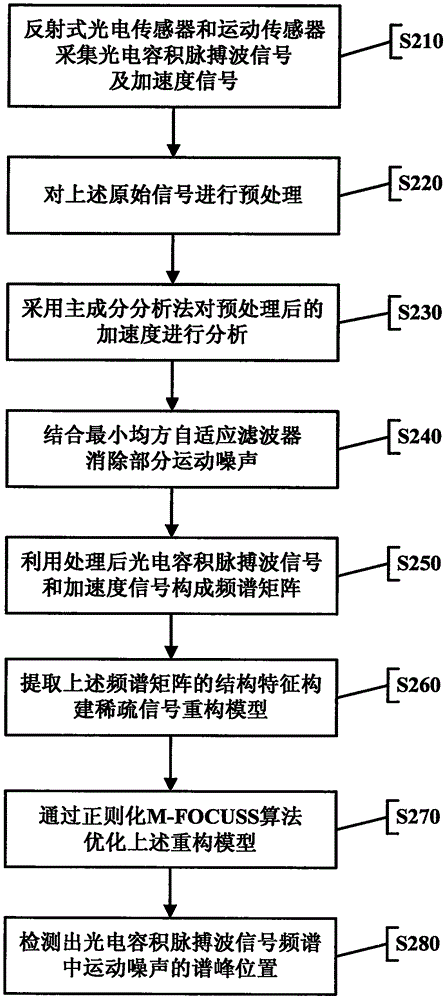Motion noise detecting method based on photoplethysmography signals
A photoplethysmography and noise detection technology, which is applied in the measurement of pulse rate/heart rate, diagnostic recording/measurement, medical science, etc., to achieve the effect of improving detection accuracy and reducing computational complexity
- Summary
- Abstract
- Description
- Claims
- Application Information
AI Technical Summary
Problems solved by technology
Method used
Image
Examples
Embodiment 1
[0022] Embodiment 1. Motion noise detection method based on photoplethysmography signal
[0023] FIG. 1 is a schematic flowchart of a motion noise detection method based on a photoplethysmography signal in this embodiment.
[0024] The present embodiment shown in Fig. 1 is the overall process of the motion noise detection method based on the photoplethysmography signal, mainly including the following steps:
[0025] Step S210, using two reflective photoelectric sensors distributed in different positions to collect photoplethysmogram signals of two channels, and then using a motion sensor to collect acceleration signals in three synchronous motion directions;
[0026] Step S220, the preprocessing includes downsampling the original signal to a sampling frequency of 25 Hz and filtering through a second-order Butterworth filter with a passband of 0.4 Hz-4 Hz;
[0027] Step S230, using the principal component analysis method to analyze the preprocessed acceleration signal, and sel...
PUM
 Login to View More
Login to View More Abstract
Description
Claims
Application Information
 Login to View More
Login to View More - R&D
- Intellectual Property
- Life Sciences
- Materials
- Tech Scout
- Unparalleled Data Quality
- Higher Quality Content
- 60% Fewer Hallucinations
Browse by: Latest US Patents, China's latest patents, Technical Efficacy Thesaurus, Application Domain, Technology Topic, Popular Technical Reports.
© 2025 PatSnap. All rights reserved.Legal|Privacy policy|Modern Slavery Act Transparency Statement|Sitemap|About US| Contact US: help@patsnap.com



